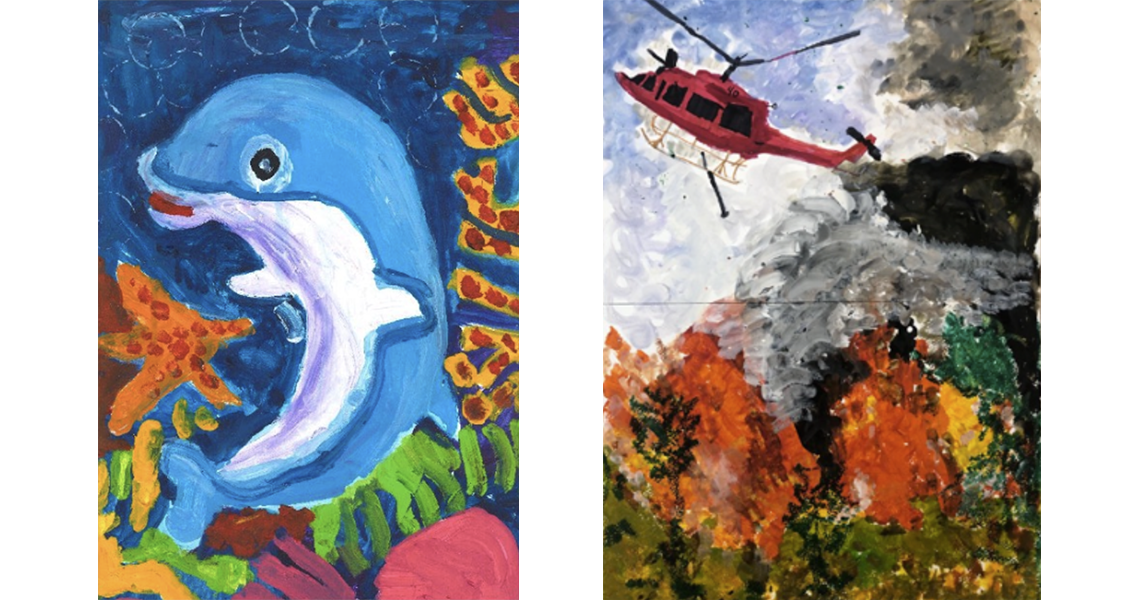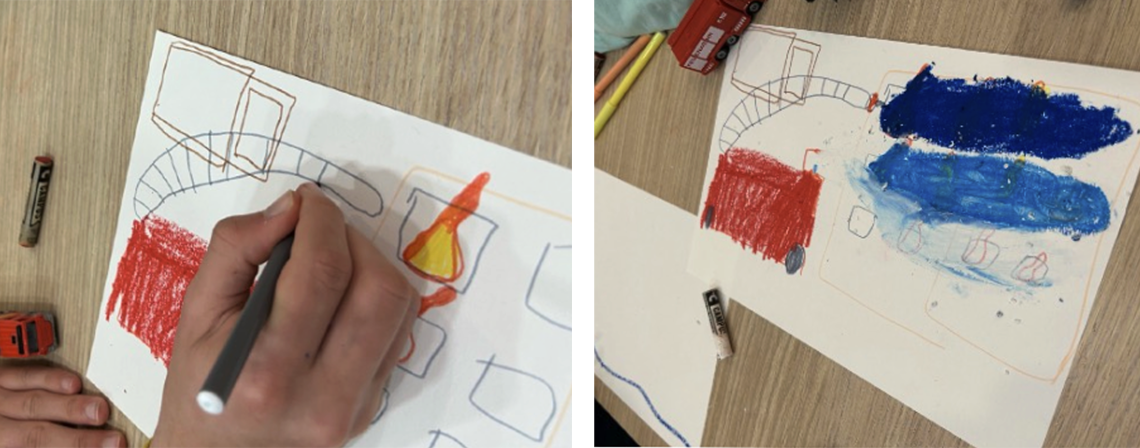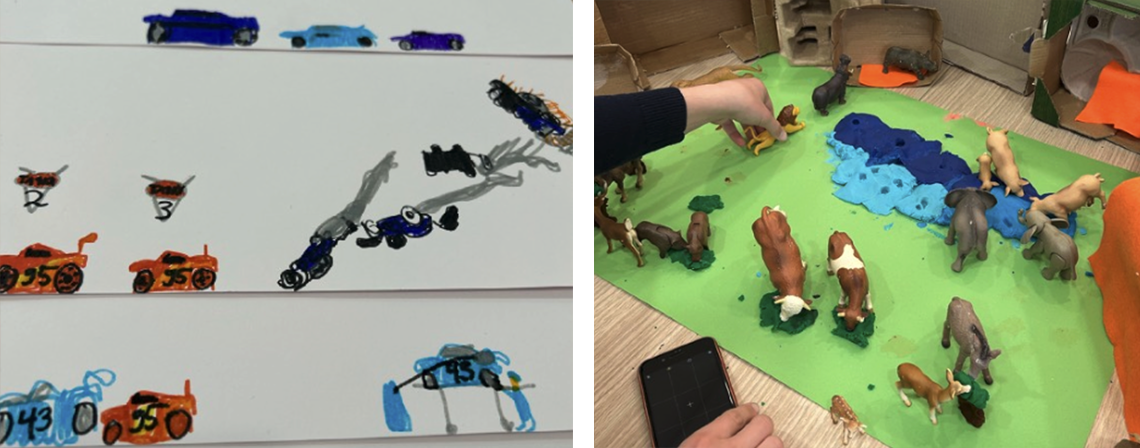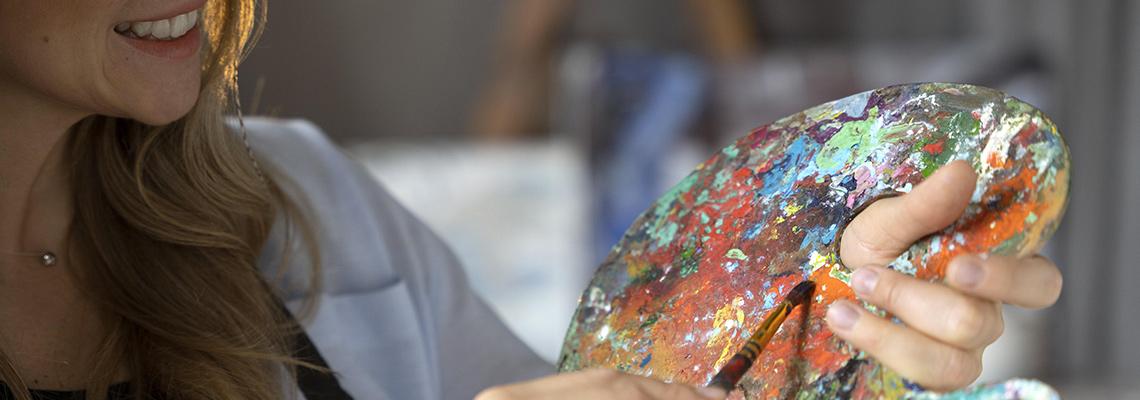Publications
Art therapy to express emotions
Editors: Sabrina Mazzola, Art Therapist, Art Therapy Supervisor and Teacher, PhD student in Expressive Art Therapy In collaboration with Dr Renaud-Yang Marcelline, child psychiatrist and doctor in charge of the CATTP in Monaco
"Art therapy is a care practice based on the therapeutic use of the artistic creative process", SFAT
The power of art therapy for self-discovery and communication
In art therapy, the various tools of expressionare used as means of communication, such as drawing, painting, collage, sculpture, writing, movement, music, and improvisations, according to the therapist's speciality. Using a variety of tools, often on a continuum, people start discovering themselves, getting in touch with their inner selves, tapping into their self-images, symbols, and inner resources, connecting with their bodies, and letting their feelings emerge through colours, shapes, lines, gestures, postures, movement, sounds and words. Thanks to the artistic process and the therapist's caring support in a safe space, participants gradually become increasingly aware of the contents of their unconscious mind, their internal dialogue and how they express themselves. By exploring their fears, doubts, barriers, problems and inner conflicts, participants often revisit certain traumatic situations while learning to connect with their body, identify and regulate their emotions, speak freely, access their inner resources, and move gently towards a path of greater well-being. Art therapy can boost self-esteem and self-confidence by helping people to become aware of their own resources, qualities, and abilities, and to rediscover and find meaning in what has been said, created or achieved. Therapeutic work will influence self-perception and contribute to creating a better self-image.
The differences between art therapy and art workshops
Art therapy is not an art course, and the objectives are different. Art workshops teach techniques and how to use tools according to specific standards. They focus on the aesthetic quality of the work and the final product, the value of which is often defined by culture or society. The aim is to develop skills. Art therapy is more about the process than the outcome. The aim is not to produce a work of art, but to let emotions and thoughts flow freely. Art and the creative process are beneficial in itself, but the therapy starts with the art therapist. There are no expectations or judgements during the support process, and the approach is adapted to each person individually, according to their challenges and needs, in line with their abilities and preferences, while respecting their boundaries. The creative process is correlated with the way the participant operates which can shed light on their difficulties, the causes of their behaviour, their values, etc. Even if the result is not of primary importance, it leaves a mark and becomes a transitional tool for the individuation process.
The therapeutic process
Decoding symbols and expressions
For the art therapist, everything that happens during the session is significant: every stage of the process, the choices (of colour, images, materials), the theme, the gestures and postures, the words, the production (concrete, abstract or ephemeral). All the verbal and non-verbal pathways, symbols and archetypes that appear in the works are taken into consideration. Attention is paid to elements that are often repeated. Through questioning and insight, the participant will be able to engage in personal introspection and understand their own process, and the issues involved and give meaning to the symbolism they express. The artistic proposalsserve as a starting point for the support, allowing us to see the affinities, difficulties, and desires of the individual or group. Each material has specific qualities, and people react differently to contact with them. For example, drawing with coloured pencils does not have the same impact as painting with acrylics. Drawing with charcoal can throw a perfectionist off balance, but at the same time, it can be liberating for someone else.
Art creation facilitates communication and emotion regulation
The interaction between the patient and the therapist focuses on the process and the artistic production, creating a dynamic relationship that enables a problem or difficulty to be symbolised and 'decentralised'. The participant is able to take a step back from their own experience, creating space for a new scenario, a character or an art piece created during the session. The work makes it possible to express emotions in a 'neutral' way , because it's easier to talk about a certain colour or shape, or to give a voice to a fictional character than to talk about yourself. The aim is not to 'finish the job' or 'achieve something'. The meaning someone gives to their art is very personal. From the moment the symbol becomes visual, it can be understood and consequently altered or transformed by giving it a desired value. What we create on the outside often has an impact on the inside, and vice versa, what we experience on the inside often manifests itself in spontaneous expression.
Coping with mistakes and difficulties
Certain subjects might trigger uncomfortable feelings. The art therapist pays attention to any difficulties or potential triggers and discusses their observations: "It seems like your rhythm has become very fast, is there a particular emotion or thought that is coming to mind?" The therapist values the person's choices and helps them to identify their feelings and sensations: "How does your body react when you say these words? Is there a colour or shape that you associate with this sensation?” 'Mistakes' are welcome as the art therapist works on them. There is no attempt to avoid a situation or reaction (with a few exceptions) and each constraint is dealt with and supported as it arises. The therapist is interested in the root of the situation which may be related to the subject under discussion, a word used, a reaction to a tool, a memory that resurfaces, a feeling of inferiority, etc. The participant is guided through these crucial moments in therapy, and the art therapist's role is to respect and understand the participant's psychological issues and boundaries.
Art therapy and the brain
On a cerebral level, art therapy can stimulate different areas of the brain, in particular those linked to creativity, emotional expression and memory. Artistic creation in a therapeutic environment can strengthen neuronal connections, promote cerebral plasticity, and improve cognitive abilities and flexibility. Traumatic memories are trapped in unconscious areas of the brain, and in some cases, verbal communication is not enough. But what can't be said can be explained nonverbally through art. Engaging in creative activity stimulates the release of beneficial neurotransmitters and hormones responsible for pleasure and attachment, such as dopamine, serotonin, and oxytocin. Art therapy can facilitate the integration of emotions and experiences through symbolic expression, which can contribute to better emotion regulation and greater self-awareness.
Art therapy for children and adolescents
Artistic expressionis a form of non-verbal communication. For children who may not be able to articulate thoughts, sensations, emotions, or perceptions, it's a way of conveying what may be difficult to express in words. For those who have experienced trauma, it's a way of 'speaking without talking' when they are unable or afraid to discuss specific events or feelings. For those who have experienced trauma, it's a way of 'speaking without talking' when they are unable or afraid to discuss specific events or feelings. It is also a sensory approach that allows children to discover themselves and communicate on many levels: visual, tactile, kinaesthetic and more. Like play therapy, art therapy offers the opportunity to express oneself through metaphor. The story behind a drawing, painting, collage, or other art piece doesn't have to be literal to be therapeutic. Childhood and adolescence are essential periods of development that present many emotional, social, and psychological challenges. Children and teenagers are often faced with intense emotions and internal conflicts. Using artistic mediums, they can express their feelings, explore the roots of their difficulties and find creative solutions. This form of expression offers emotional relief and can help develop healthy coping mechanisms. Children and teenagers can discover and develop their skills, which boosts their self-confidence and encourages them to explore new things. Art therapy can be carried out individually or in groups, offering children and teenagers the chance to develop their social and interpersonal skills. By working in groups, they learn to share, collaborate, and respect each other's ideas. Art therapy is effective in reducing harmful behaviour, encouraging communication and cooperation, and strengthening social ties.
A clinical example in art therapy
This case involves a non-French-speaking teenager with autism spectrum disorder who has recently been resettled from an area of conflict. He has difficulty expressing himself, even in his own language, and his speech is not always comprehensible to those close to them.
The evolution of artistic expression through colours
Our communication was based on non-verbal and bodily expressions, with sounds and a few simple words, but above all through play and creation. Before the war, his artistic expression was rich in exploration of colour, form and almost decorative detail. He often depicts animals in their natural environment. The composition is dynamic and central, and the shapes are filled with colour (image no. 1). At the start of the war, he began to depict a new theme: fire (image no. 2). The expression becomes more agitated, with darker shades. Black becomes part of his expression.

During the first sessions of art therapy, he repeatedly drew fire coming from houses and cars (image no. 3). During this process, he expressed anger on his face. He decided to put the fire out using a fire engine and hose. He then uses white or blue pastels to neutralise the fire until it disappears completely from the painting (image 4). Intervention and transformation take place directly in the picture He establishes this ritual of drawing the fire, which he then covers with white or blue until it disappears, symbolically participating in the reduction of the fire, both inside and out.

Through the representation of the flames and their extinction, his entire body participates, in jerky, stressed, agitated, rapid, theatrical movements that are at the same time liberating, as he deals with the traumatic event. He externalises his inner chaos through his choice of colours, excessive use of water, drawing, painting, modelling clay, paper, fabric, playing with action figures, sand toys, lego, and so on. There is a difference between the first drawing (before the war) and the fourth (during the war). Lines have become extremely simplified, details have disappeared, and colours and shapes are only there to tell the story and express emotions. The colours and shapes are in their simplest expression, in a regressive and basic form. There are empty spaces. He has moved from a joyful, peaceful expression of life to survival, but also from observing to taking action. Over the course of the sessions, he leaves the theme of fire behind and gradually moves towards a different type of representation. He approaches the subject of destruction and repair from other angles. For example, after the cars crash, he brings in a mechanic to repair them (image no. 5).
A transition to recovery
He’s involved in creating an animal village using figures and modelling clay. The animals are living peacefully in their environment before being attacked by wild animals. We build houses together to save them. He uses stop-motion to capture each stage of the rescue and groups the animal families together (image no. 6).

After several months of follow-up, this teenager has regained some psychological equilibrium. His movements are slower, more rhythmic and calmer, he is less disturbed by his emotions, and his creations focus on repair rather than destruction. Having the art therapist present was very important to him, as were her verbal and non-verbal responses. The art therapist's role was to witness his story, to experience what he was feeling, to guide him through his fear and inner struggle, to recognise, verbalise and validate what he was going through internally, and to provide him with a safe space to heal.
Conclusion
Art therapy makes non-verbal storytelling possible, guiding the patient towards emotional release and freedom. The creative process is part of a dynamic in which everything can be altered and transformed. Art therapy helps to rebuild and repair a traumatic past, to reconnect with oneself and to help restore a wounded self-image.
